 Scientists at Harvard have discovered that water vapor is forced deep into the stratosphere over the United States during summer storms. This alters atmospheric conditions in a way that can potentially lead to ozone loss in the lower stratosphere of the Earth. This finding links the potential loss of ozone over populated mid-latitude regions in summer to the frequency and intensity of storms. The frequency and intensity of storms could in turn increase with climate forcing resulting from rising levels of carbon dioxide and methane in the atmosphere. This raises a public health concern because the Earth’s ozone layer blocks a large fraction of the sun’s ultraviolet light, protecting life on Earth from radiation that in humans can lead to skin cancer. With continuing release of carbon dioxide and methane, the additional concern is that these changes would be irreversible.
Scientists at Harvard have discovered that water vapor is forced deep into the stratosphere over the United States during summer storms. This alters atmospheric conditions in a way that can potentially lead to ozone loss in the lower stratosphere of the Earth. This finding links the potential loss of ozone over populated mid-latitude regions in summer to the frequency and intensity of storms. The frequency and intensity of storms could in turn increase with climate forcing resulting from rising levels of carbon dioxide and methane in the atmosphere. This raises a public health concern because the Earth’s ozone layer blocks a large fraction of the sun’s ultraviolet light, protecting life on Earth from radiation that in humans can lead to skin cancer. With continuing release of carbon dioxide and methane, the additional concern is that these changes would be irreversible.
Stratospheric ozone is susceptible to catalysts such as chlorine and bromine radicals formed in part from the photochemical breakdown of chlorofluorocarbons (CFCs) and halons, which are present in the Earth’s atmosphere as the result of commercial use of these synthetic compounds. The chemical reactions that destroy ozone, however, are highly dependent on both atmospheric temperature and the presence of water vapor. In fact, after the cause of ozone losses over the Antarctic (the Antarctic Ozone Hole) and Arctic regions was established, culminating in the international ban on CFCs known as the Montreal Protocol, scientists noted humanity’s good fortune that the chemical reactions that destroy ozone only take place at low temperatures in the winter over the Earth’s polar regions. This latest research documents that the threshold conditions for ozone destruction are now routinely crossed in summertime, even at mid-latitudes, when convection forces large concentrations of water vapor deep into the stratosphere. The findings appear in the July 26, 2012 edition of Science online.
 “We have a wealth of data from a large number of flights of the NASA ER-2 aircraft (the U-2 spy plane) into both the Antarctic and Arctic winter stratosphere that established the mechanism for rapid destruction of ozone there, says atmospheric scientist James G. Anderson, the Philip S. Weld professor of atmospheric chemistry at Harvard University. “In contrast, in the current studies, we were investigating the behavior of convective water vapor from storms over the U.S. as part of our climate research, not ozone photochemistry. “What proved surprising was the remarkable altitude to which water vapor was being lofted – altitudes exceeding 60,000 ft – and how frequently it was happening.”
“We have a wealth of data from a large number of flights of the NASA ER-2 aircraft (the U-2 spy plane) into both the Antarctic and Arctic winter stratosphere that established the mechanism for rapid destruction of ozone there, says atmospheric scientist James G. Anderson, the Philip S. Weld professor of atmospheric chemistry at Harvard University. “In contrast, in the current studies, we were investigating the behavior of convective water vapor from storms over the U.S. as part of our climate research, not ozone photochemistry. “What proved surprising was the remarkable altitude to which water vapor was being lofted – altitudes exceeding 60,000 ft – and how frequently it was happening.”
Anderson and his team realized the significance of the finding—and its implications for a changing climate—because higher water vapor concentrations in the cold reaches of the lower stratosphere change the threshold temperature at which chlorine is converted to a free radical state. Alternatively stated, in the presence of higher water vapor concentrations, the temperature at which chlorine is converted to free radical form is significantly higher, triggering direct catalytic removal of ozone.
In continuing studies the team used isotopic signatures to demonstrate that the water vapor had been carried directly to the stratosphere as a result of convective injection. What they found was that in the region of convectively-injected water vapor, the catalytic loss of ozone could increase by a hundredfold. As a result, rates of ozone loss could exceed the natural rates of ozone regeneration (and replacement through transport from other regions) by two orders of magnitude. These data come from experimental evidence gathered over the United States, but the researchers note that similar conditions may exist elsewhere.
This means that at the temperatures and water vapor concentrations observed by the team, the period of time required to chemically remove ozone in significant amounts decreases to a few days within the region of high water vapor concentration. Because skin cancer incidence is associated with UV dosage levels, which in turn depend on ozone concentrations, this finding raises concerns about public health.
In addition, the findings are troubling because while Earth’s stratosphere is currently extremely dry, were it to become wetter, as is indicated in the paleorecord during earlier periods of elevated carbon dioxide, the impact on ozone levels could be significant. The high current loading of chlorine and bromine resulting from commercial release of CFCs and halons is unprecedented in the Earth’s history. “Were the intensity and frequency of convective events to increase irreversibly as a result of climate forcing,” the scientists write, “decreases in ozone and associated increases in UV dosage would also be irreversible.”
The Science paper notes that loss of ice in the Artic threatens to release significant amounts of carbon dioxide and methane from the soils of Siberia and Northern Alaska, potentially accelerating climate change. The scientists also note that an increasingly-cited remedy for climate change, specifically, geo-engineering the climate by launching sulfate particles directly into the atmosphere in order to reflect sunlight away from Earth, would accelerate the process of ozone loss by increasing the reactive surface area for conversion of chlorine to free radical form, as was observed after the eruption of Mt. Pinatubo in 1991.
Mario Molina, UC San Diego distinguished professor of chemistry and biochemistry, and co-recipient of the 1995 Nobel Prize in Chemistry for his work on CFCs and ozone depletion, says that the findings described in the Science paper are “something very much to worry about because there is the potential for a pretty significant effect on stratospheric ozone at latitudes where we normally wouldn’t think that would happen.” Noting that his famous paper on CFC and ozone chemistry was largely hypothesis, this paper by contrast is based on science that is well-established: even though it will have to be tested with further measurements, “there is not much speculation,” he says.
The location of the ozone loss in this case gives special cause for concern. Because the Antarctic ozone hole is confined to the most Southern latitudes and only occasionally moves toward the southern tip of South America, scientists have little field experience with biological impacts. “DNA, of course, is constantly being damaged by ultraviolet radiation,” notes Molina “and there is a natural repair mechanism. But should ozone disappear in the way described in Professor Anderson’s paper, this would very much be a threat. Many ecological systems are quite sensitive to ultraviolet radiation and they have not evolved the repair mechanisms for more severe ozone depletion.”
Molina says this is “a further indication of society having impacts on the environment which in principle we can do something about.” Harkening back to the ozone issue, he points out that if in the late 1980s there had “been no international agreement to ban CFCs,” this newly described problem “would have been a lot worse. Hopefully, these types of warnings will make the case even stronger for society to begin to react to the climate change issue, just like we managed to do with the ozone issue.”
Ralph Cicerone, President of the National Academy of Sciences and himself an atmospheric chemist, says that Anderson’s group has “come up with a very important overall picture where the individual pieces are well mapped out; they have been studied by the world’s best experts and they work. Is this as serious as it appears? It is hard to figure that out,” Cicerone says, “but what the Anderson group is talking about can be measured fairly quickly. It is now just a matter of marshaling the people and resources to investigate further.”
“Then we can figure out what the influence is on ozone,” Cicerone continues, “and how much more ultraviolet light penetrates to the surface of the Earth, so that we can get to the bottom-line effects on human health, as well as crop and other damage.” If something important is observed,” he says, then comes the question, “What does it mean in a future climate where the air is getting warmer and moister? Are these convective updraft events which thrust moisture into the stratosphere going to be more frequent? We think they are.”
Funding for this research was provided by NASA.
James G. Anderson is Philip S. Weld professor in the Departments of Chemistry and Chemical Biology and Earth and Planetary Sciences and in the School of Engineering and Applied Sciences. He is a faculty associate and member of the steering committee of the Harvard University Center for the Environment (HUCE), which encourages research and education about the environment and its many interactions with human society. HUCE recognizes that the most pressing problems facing our natural environment are complex, often requiring collaborative investigation by scholars versed in different disciplines. By connecting scholars and practitioners from different disciplines, the Center seeks to raise the quality of environmental research at Harvard and beyond.
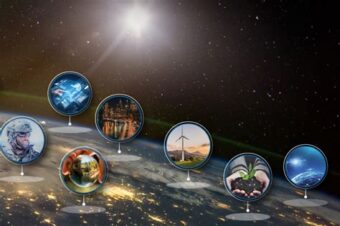

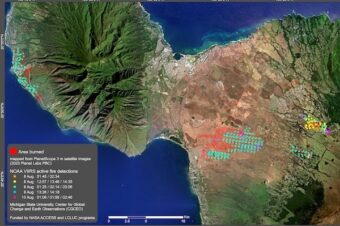
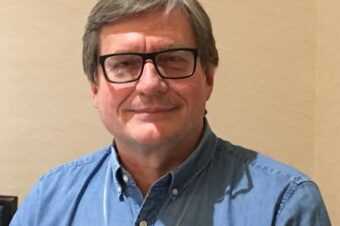
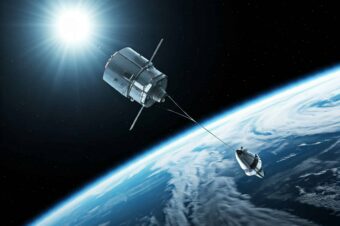
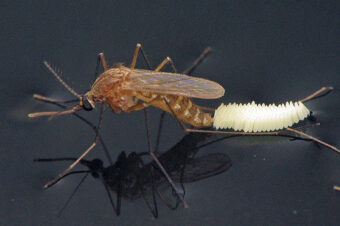
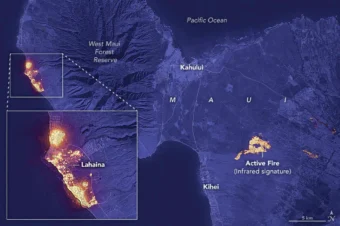

Leave a Reply